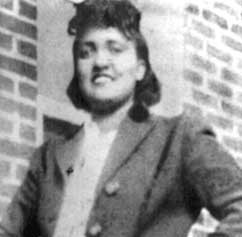Henrietta Lacks is best recognized for her immortal HeLa cells, which have been used in research that led to the development of the Polio vaccine, chemotherapy, and contributed to Parkinson’s research. In 1951, Henrietta Lacks went to Johns Hopkins Hospital for treatment for an unknown illness, a “knot” in her abdomen. After several hospital visits, she died of cervical cancer on October 4, 1951. Lacks died at the age of 31 years old, and left behind her husband and five children. After her death, a lab attendant discovered that a swab of Lacks’ cancer cells reproduced at an extremely fast rate. This was extraordinary because while most cancerous cells died within a few days, Lacks’ cells doubled every 24 hours. Research led by Dr. George Gey, marked the first instance of continuous growth of human cells outside the body. Lack’s cells were the first recorded example of cells that divided multiple times without dying, which is why her cells were coined, “immortal.” The HeLa (named for the first of letters of her first and last names) cells would go on to transform modern medicine. To date, the easy-to-grow HeLa cells have been used in more than 76,000 studies.
Henrietta Lack’s case began a conversation about medical ethics, particularly the morality of using someone’s cells without their consent. It took about twenty-five years for the Lacks family to receive any knowledge about the contribution their beloved wife and mother was making to modern science. The Lacks family still has not received compensations for the contribution Henrietta Lacks made to modern science. Henrietta Lacks not only left a legacy of medical research, but also a legacy of policy regarding how doctors should ethically, and morally, handle biological specimens from humans.

